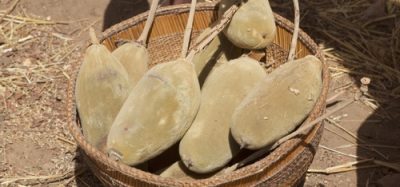Multiscale crop modelling required to ensure sustainable food security
- Like
- Digg
- Del
- Tumblr
- VKontakte
- Buffer
- Love This
- Odnoklassniki
- Meneame
- Blogger
- Amazon
- Yahoo Mail
- Gmail
- AOL
- Newsvine
- HackerNews
- Evernote
- MySpace
- Mail.ru
- Viadeo
- Line
- Comments
- Yummly
- SMS
- Viber
- Telegram
- Subscribe
- Skype
- Facebook Messenger
- Kakao
- LiveJournal
- Yammer
- Edgar
- Fintel
- Mix
- Instapaper
- Copy Link
Posted: 15 May 2020 | Sam Mehmet (New Food) | No comments yet
In a new paper, researchers have identified a series of multiscale and multidisciplinary components – from crop genetics up to global factors – that are “critical” for finding environmentally sustainable solutions to food security.


Crop modelling is essential for understanding how to secure food supply as the planet adapts to climate change, researchers from the University of Illinois Urbana-Champaign have suggested. Many current crop models focus on simulating crop growth and yield at the field scale, but lack genetic and physiological data, according to the researchers, which may hamper accurate production and environmental impact assessment at larger scales.
Many crop models focus on understanding how plant characteristics such as leaf size play into the crop yield at the field scale, they said. “Modelling at this scale is critical, but we would like to incorporate information from gene-to-cell and regional-to-global scale data into our modelling framework,” said Bin Peng, a postdoctoral researcher and co-lead author.
The study identified components that could help generate a more informative modelling framework. “Multiscale modelling is the key to linking the design of climate change adaptation strategies for crop and field management with a large-scale assessment of adaptation impact on crop production, environment, climate and economy,” Peng said.
The study called for a better representation of the physiological responses of crops to climate and environmental stressors – like drought, extreme rainfall and ozone damage. “Many physiological processes would be important to simulate the crop growth under stressed conditions accurately,” Peng said. Examples include water moving from soil to plant to atmosphere driven by canopy energy balance, he said.
“We should also include a better representation of crop management. That would be extremely important for assessing both crop production and environmental sustainability, as well as their tradeoffs.”
The researchers said there are opportunities to close a variety of data gaps, as well. “Integration of remote-sensing data, such as the work performed in our lab, will be extremely valuable for reducing data gaps and uncertainties,” said natural resources and environmental sciences professor and project investigator Kaiyu Guan. “One of the advantages of remote sensing is its vast spatial coverage – we can use remote sensing to constrain crop models over every field on the planet.”
The authors also proposed a model-data integration pathway forward. “Doing the right simulation of crop responses to climate change factors is critically important,” Guan said. “The most challenging part is whether crop models can capture those emergent relationships, which can be derived from empirical observations.”
“No single scientist or research lab can produce these models on their own,” added study co-author and plant biology professor Amy Marshall-Colón. “This type of effort will require patience and collaboration across many disciplines.”









